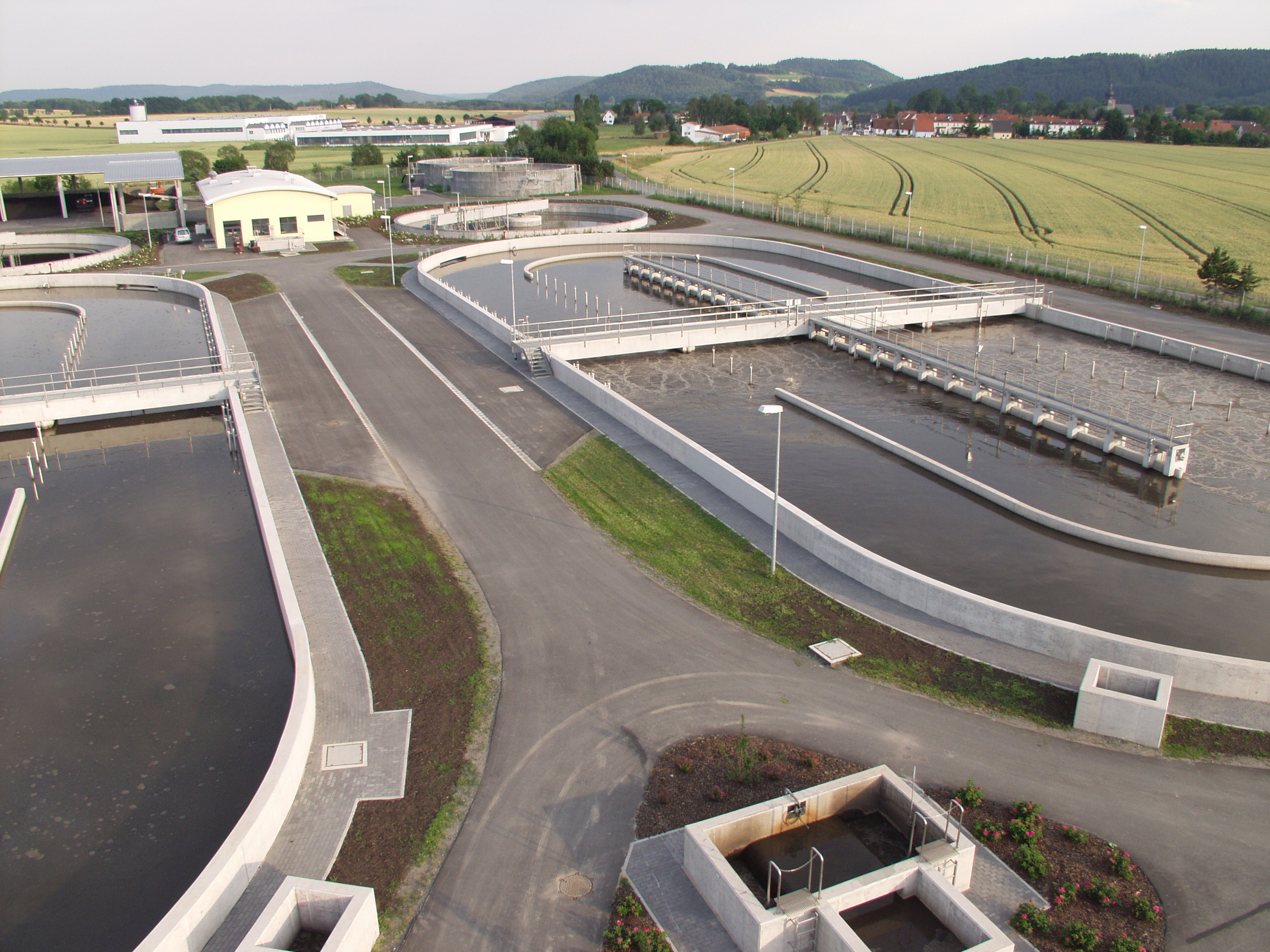Electricity from wind power and solar systems is to be converted into hydrogen in the HYPOS project. On the one hand this can be stored, and on the other it is a raw material that is very much in demand for the chemical industry. With this goal, more than 100 partners from industry and science have joined together in the HYPOS consortium, including the Fraunhofer Center for Silicon Photovoltaics CSP in Halle. A new subproject is now starting in Thuringia: Green electricity will be used in the Sonneberg-Heubisch wastewater treatment plant to acquire storable hydrogen by means of electrolysis and to produce oxygen, which is needed to treat the wastewater.

»Green hydrogen can help to offset the generation peaks that occur if there is a lot of wind and sun. Instead of loading the electricity grids with surplus renewable energy, we convert it into a valuable resource that on the one hand can be stored and on the other can be used as a material«, said Dr. Joachim Löffler, Managing Director of the mechanical engineering company Kumatec and coordinator of the subproject. »The decentralized approach is just as important as the close cooperation of small and mid-sized companies with partners from science such as the Fraunhofer CSP. Because this opens up new market opportunities.«
The basic physical principle behind this is electrolysis: The electricity produced from wind or solar energy is used to split water into hydrogen and oxygen. With this large-scale technology use, the HYPOS consortium, which is funded by the German Federal Ministry for Education and Research as part of its »Twenty20 – Partnership for Innovation« program, wants to support the turn of energy policies and supply the chemical industry with sustainably produced raw materials. Several individual projects will be implemented up to 2020.
Oxygen and hydrogen will also be produced in Sonneberg-Heubisch wastewater treatment plant by means of electrolysis. The oxygen will be fed directly into the settlement tank, where it helps to treat the wastewater in the aeration tank of the biological treatment stage. The advantage for Wasserwerke Sonneberg, which operates the treatment plant: They no longer have to use blowers to direct oxygen from the ambient air into the settlement tank. Instead, extremely pure oxygen is produced in the electrolyzer, which the Thuringia firm Kumatec has developed especially for the project: this oxygen is already pressurized and finds its way into the tank without any further energy supply.
As the second product of the electrolysis, the hydrogen will on the one hand be available at a filling station for fuel cell cars, which will be installed within the grounds of the wastewater treatment plant by the north Hesse firm SERA Compress, another LocalHy partner. On the other hand, it can be converted back. To this end, the project partner WTZ Roßlau will develop a 50 kW gas motor, which can be operated with hydrogen.
»The project in Heubisch perfectly embodies the idea of HYPOS, because it covers the entire chain from generation to conversion and storage through to recovery«, said Prof. Ralf B. Wehrspohn, Acting Head of the Fraunhofer Center for Silicon Photovoltaics CSP in Halle. »We want to show what electrolysis can do for green chemistry or for the storage of renewable energy directly on site – and in a way that makes it worthwhile economically.«
The individual technologies such as the electrolyzer, the gas motor and the system for direct hydrogen fueling without high-pressure intermediate storage will be developed and optimized during the test scheduled to last for three years. After setting up the individual components, test operation is due to start in the summer of 2017.
In LocalHy, the Fraunhofer CSP is responsible for the process control system: From the data produced during the test period the researchers will extrapolate the behavior for continuous operation of such a plant and at the same time also evaluate its economic efficiency. In addition, they will use data from various photovoltaic systems in the surrounding area to simulate the availability of electricity from renewable energy, because the wastewater treatment plant does not yet have its own photovoltaics system. Therefore, green electricity for the project will initially be drawn from other sources.